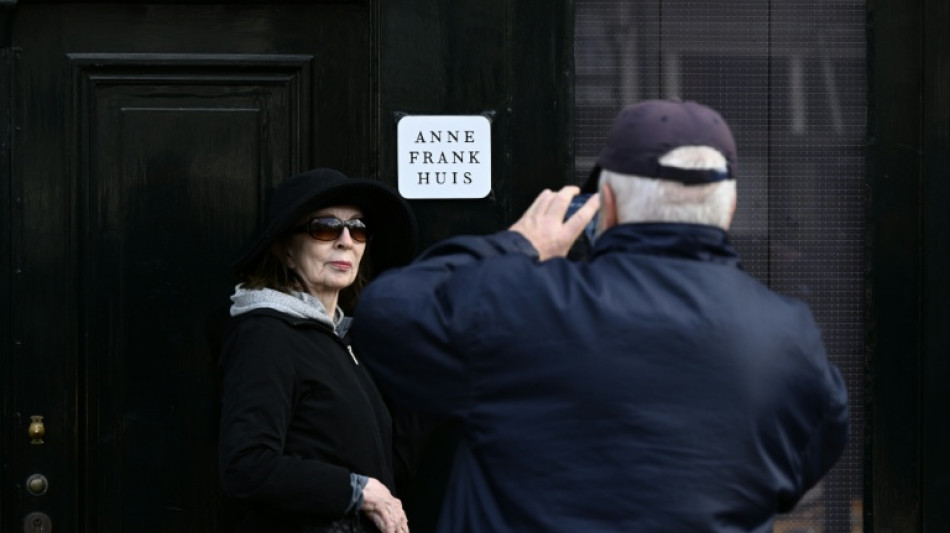

AI-powered tour brings Anne Frank's story to life in Amsterdam
Amsterdam, 1941. Every day, young Anne Frank and her sister Margot walked 2.5 kilometres to school, as Nazi anti-Jewish laws barred them from using public transport or bicycles.
In 2025, using Artificial Intelligence, a new immersive guided tour traces the route of this Amsterdam icon through the city, offering an interactive smartphone reconstruction of the Dutch Jewish experience under Nazi occupation.
"We created this product to bring Anne Frank closer to more people," said Moti Erdeapel, director of CityFans, the tourism-tech firm behind the project.
"The Anne Frank House, the museum, is a very small place and it has limited capacity, so a lot of people come here and get disappointed because they didn't get to visit Anne Frank," he said.
Each year, more than one million tourists visit the narrow house and annex where the Jewish girl and her family hid from the Nazis for two years.
To visit the place where Anne Frank wrote her famous diary, visitors must book six weeks in advance. Tickets sell out fast.
All that is required for the virtual tour is a mobile phone and a pair of headphones. A unique code grants access to a seven-kilometre (four-mile), 12-stop route.
An audio narrative guides the visitor, along with lifelike animations generated by AI using data from the Anne Frank Institute, the city of Amsterdam and the Holocaust museum.
- 'Incredible people' -
"We tried to dig up stories that maybe most people don't really know but are incredible, people that really risked their lives to save children and to smuggle them out of the Nazis' hands into hiding," Erdeapel said.
One stop features the former home of Miep Gies, the Dutch Catholic who helped hide the Frank family. Her face is brought to life using archive photographs and digital animation.
In the De Pijp district, the tour reveals that a coffeeshop now occupies the site of the former Koco ice cream parlour.
Run by German-Jewish refugees, the shop helped spark the only protest in Amsterdam against Nazi persecution of Jews -- a demonstration that was violently crushed.
"One of the things that make it close to heart is not only that it's such an important story for Amsterdam, but also for me personally, coming from a family of Holocaust survivors," said Erdeapel, who is of Polish and Hungarian Jewish descent.
"My grandparents survived the Holocaust, a lot of the family members did, and I grew up with these stories about the Holocaust and about people that didn't make it back," said the 45-year-old Amsterdam resident.
Though he stresses the importance of museums and the diary, Erdeapel sees this guided tour as a way to tell Anne Frank's story to a new, tech-savvy generation.
"It's really important that we do good research and we work on storytelling and there's a human aspect to the creation," he said.
"If you have a deep process to develop this product, I think AI is just going to make things more beautiful and exciting and immersive for everyone."
Around 107,000 Dutch Jews and refugees were deported during World War II. Of these, 102,000 -- including Anne Frank -- were killed, roughly 75 percent of the pre-war Jewish population.
R.Deshmukh--MT




